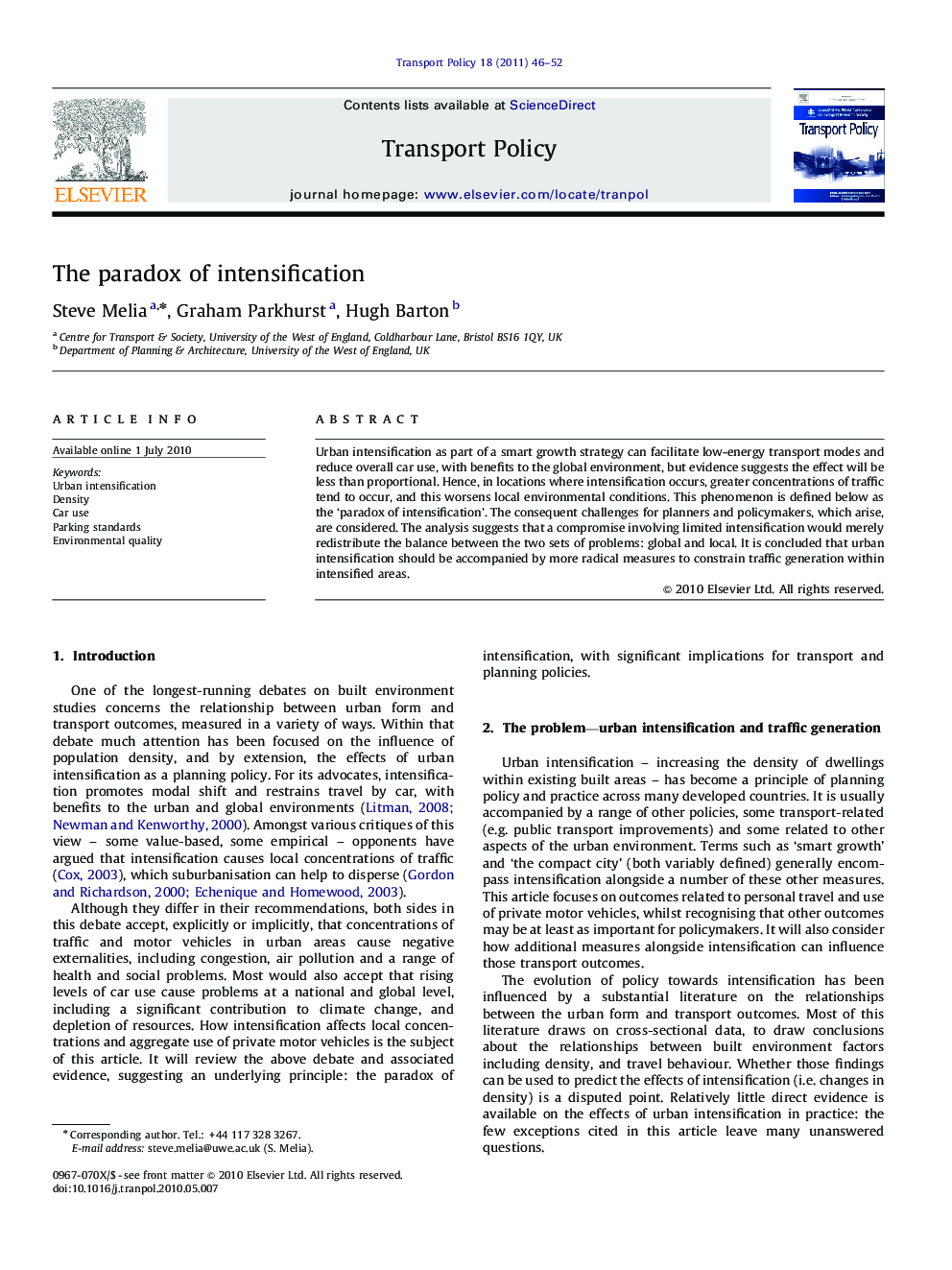| Article ID | Journal | Published Year | Pages | File Type |
|---|---|---|---|---|
| 1065286 | Transport Policy | 2011 | 7 Pages |
Urban intensification as part of a smart growth strategy can facilitate low-energy transport modes and reduce overall car use, with benefits to the global environment, but evidence suggests the effect will be less than proportional. Hence, in locations where intensification occurs, greater concentrations of traffic tend to occur, and this worsens local environmental conditions. This phenomenon is defined below as the ‘paradox of intensification’. The consequent challenges for planners and policymakers, which arise, are considered. The analysis suggests that a compromise involving limited intensification would merely redistribute the balance between the two sets of problems: global and local. It is concluded that urban intensification should be accompanied by more radical measures to constrain traffic generation within intensified areas.
Graphical AbstractResearch Highlights►Urban intensification tends to reduce overall car use. ►The relationship is inelastic, particularly at the level of the individual development. ►This means urban intensification worsens local concentrations of traffic. ►Unless it is accompanied by more radical traffic restraint measures.
